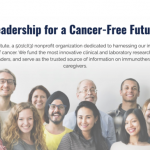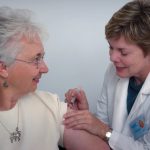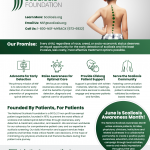A quick Google search will tell you that sickle cell anemia, or sickle cell disease, is considered rare. However, this does not detract from the importance of this important topic.
The Teen Magazine had the incredible opportunity to speak (virtually) with the Sickle Cell Disease Foundation, the first and oldest non-profit sickle cell organization with 61 years of service, with words from Deborah Green, Director of health education.
By promoting and sharing awareness and speaking out about sickle cell disease and the Foundation’s mission, we hope to inspire Generation Z and young adults.
Warriors are not born, they are made! 💪🏽♥️ How do you channel your inner warrior through tough times? ⬇️ pic.twitter.com/VkxicTelAF
— Sickle Cell Foundation (@SCDFoundation) February 7, 2021
What exactly is sickle cell disease?
Sickle cell disease is a group of inherited red blood cell disorders that affect hemoglobin, the protein that carries oxygen in the body.
Normally, red blood cells are disc-shaped and flexible to move easily through blood vessels. In sickle cell disease, the red blood cells are shaped like a crescent or “sickle”. These cells do not bend or move easily and can block blood flow to the rest of the body.
Blocked blood flow in the body can lead to serious problems, including strokes, eye problems, infections, and episodes of pain, called pain attacks.
Sickle cell disease is a lifelong disease. A blood and bone marrow transplant is currently the only cure for sickle cell disease, but there are effective treatments that can reduce symptoms and prolong life.
The creation of SCDF
How was the Sickle Cell Foundation born?
The Sickle Cell Disease Foundation (formerly known as the Sickle Cell Disease Research Foundation) was founded in 1957 by four African American physicians: Browing Allen, MD, Wallace C. Marine, MD, Elmer Anderson, MD, and Theodore Blevins, MD who were frequently asked about the medical management of sickle cell disease.
The mission
What is the mission of the Sickle Cell Foundation?
The Sickle Cell Foundation provides education, services and programs that improve the lives of people living with sickle cell disease.
We raise public awareness, lead effective advocacy initiatives and promote innovative therapies to ultimately find a cure.
See this post on Instagram
Find a treatment
How does the organization help find a treatment or cure for the disease?
Historically, we have funded sickle cell research.
Currently, we work closely with researchers who are working on treatments and therapies for sickle cell disease. We encourage participation in clinical trials. We also assist the FDA as needed to help advance therapeutics through the process.
About Advocacy Initiatives
Could you tell us more about advocacy initiatives?
In California, the median age of death for people with SCD is 43, which is well below the median age of death for people with SCD nationwide at 61 and for the general population. from the United States at age 84.5.
In 2019, we were instrumental in securing $15 million in funding from the State of California to create new services for Californians with SCD in four priority areas over the next three years.
These areas are intended for:
- Establish a network of sickle cell centers and community organizations in counties where the largest number of adults with sickle cell disease live to provide access to specialist care and improve the quality of care for adults with sickle cell disease
- Support workforce expansion, among clinicians and community health workers, to improve care coordination
- Expand surveillance to monitor disease prevalence, health care utilization, complications and costs
- Carry out sensitization and sensitization activities on the SCD
See this post on Instagram
About Advanced Therapies
Tell us more about the innovative therapies promoted by the Sickle Cell Foundation!
The innovative therapies that we are currently promoting are:
Hydroxyurea
An FDA-approved treatment that can increase fetal hemoglobin levels. This production of fetal hemoglobin may allow red blood cells to maintain their round shape, thereby minimizing the frequency of pain episodes in people with sickle cell disease.
Endari (L-glutamine)
A natural amino acid that has been approved by the FDA to reduce acute complications of sickle cell disease in adults and children 5 years and older.
Support
Network with other people with sickle cell disease. Often people with sickle cell disease believe that they are the only people with the condition and have not been in fellowship with others who may have similar stories to share.
Services and programs
What are some of the services and programs for people affected by sickle cell disease?
Since 1967, we have offered an annual summer camp for children aged 7 to 14 with sickle cell disease.
Camp Crescent Moon allows children with sickle cell disease to participate in activities that other children do at camp, but in a medically supervised environment to manage any complications of sickle cell disease that may arise. A team of volunteer nurses, doctors, camp counselors and others donate their time to provide this overnight opportunity for up to 100 children each year.
See this post on Instagram
SC Crew’s Teen Transition Program is offered to teens with sickle cell disease between the ages of 15 and 19 to help prepare them for life as an adult with sickle cell disease. This transition is often overlooked, but the medical care and needs are different for adults than for children.
Sickle Cell Education and Hemoglobin Trait Counseling – We provide sickle cell education to the general community, the medical community, and individuals and families affected by sickle cell disease. Additionally, we provide advice on hemoglobin traits for parents of babies identified with a hemoglobin trait such as sickle cell trait.
Sickle cell trait (SCT) is not a mild form of sickle cell disease. Having SCT simply means that a person carries a single sickle cell disease (SCD) gene and can pass that gene on to their children. People with SCT usually have none of the symptoms of SCD and lead normal lives. In addition to the sickle cell trait, there are other hemoglobin traits that people of childbearing age should be aware of and test for.
Sickle cell trait is not a type of sickle cell disease. Sickle cell trait does not turn into sickle cell disease. People with sickle cell trait are generally healthy under ordinary circumstances. pic.twitter.com/5vfjkSmqd9
— Sickle Cell Foundation (@SCDFoundation) January 31, 2021
The greatest achievement
What would be the Sickle Cell Foundation’s greatest achievement?
Our biggest accomplishment to date is the work we’ve done in California to impact medical care for people with sickle cell disease (answer to question #5).
Public awareness
How does the Sickle Cell Foundation raise awareness?
We use various methods available to raise awareness. This includes presentations and information sessions (in-person and virtually), health fairs, billboards and bus benches, social media posts about sickle cell disease and sickle cell trait.
See this post on Instagram
It is imperative that people know that sickle cell disease affects people of all races and ethnic groups.
Proud to be with
What makes you most proud to be with this organization?
What makes me most proud is the work we do to help our customers and our community. We keep the focus on people with sickle cell disease at all times.
Sickle cell disease is a neglected disease and therefore less well known than less common diseases such as haemophilia and cystic fibrosis. Although we are a small organization, we work diligently to ensure quality health care for people with sickle cell disease.
Sickle Cell Foundation Events
Are there any upcoming events you could tell us about? If not, could you tell us about a recent event?
Since mid-February 2020, we have had to go virtual with all our events. Upcoming events include SCD awareness sessions on the COVID19 vaccine, newly FDA-approved treatments available for SCD, and Camp Crescent Moon.
See this post on Instagram
What can you do?
As a magazine focused on teens and young adults, are there ways for Gen Z to get involved with the Sickle Cell Foundation?
We strongly encourage Generation Z to learn more about sickle cell disease. When people learn how people with sickle cell disease are affected, they are better able to make a difference in the quality of life for people with sickle cell disease.
As stated earlier, sickle cell disease is a forgotten disease, but it affects hundreds of thousands of people in the United States and millions nationwide. Hopefully, by becoming aware, they can help friends, neighbors, colleagues, family members, etc.
Another recommendation for Gen Z is to know their hemoglobin status.
Millions of people have sickle cell trait or other hemoglobin traits and don’t know it. This puts them at risk of having a child with sickle cell disease. It takes two parents with one sickle cell trait or one parent with one sickle cell trait and the other with a different hemoglobin trait to have a child with sickle cell disease. There is a 25% chance with EVERY pregnancy.
Most states test babies at birth for sickle cell disease. They also test for sickle cell trait. Their lab results should be available as part of their newborn screening program.
We encourage anyone born in California after February 29, 1990 to request their newborn sickle cell screening results from the State of California.
Carry on!
Check out the Sickle Cell Foundation on Instagram at @scdfoundation.
They also have a Twitter, which is at @scdfoundation.
Thanks
Many thanks to the Sickle Cell Foundation and Deborah Green, Director of Health Education for these inspiring words.
See this post on Instagram






